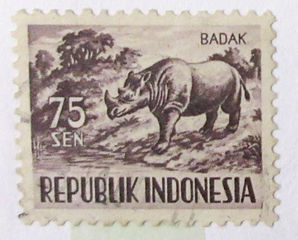

The Komodo dragon is the world's largest lizard species. It is found mainly on the Indonesian islands of Komodo, Rintja, Padar, and Flores. They exist nowhere else in the world. Reaching lengths of up to 3 m or more, and weighing up to 126 kg, these reptiles are swift runners and climbers with great appetites for deer and wild boar. There are only an estimated 1,000 to 5,000 of these monitor lizards living today.

This national park, located in the extreme south-western tip of Java on the Sunda shelf, includes the Ujung Kulon peninsula and several offshore islands and encompasses the natural reserve of Krakatoa.

Inhabited for the past one and a half million years, the first hominid fossil at this site was discovered during excavations carried out in 1936-41. To date, half of all the world's known hominid fossils have been found with 50 finds of Meganthropus palaeo and Pithecanthropus erectus/Homo erectus.
This site comprises three national parks: Gunung Leuser National Park, Kerinci Seblat National Park, and Bukit Barisan Selatan National Park.
The Subak System as a Manifestation of the Tri Hita Karana Philosophy
Lynn Salmon <>{
Last Updated: September 18, 2023